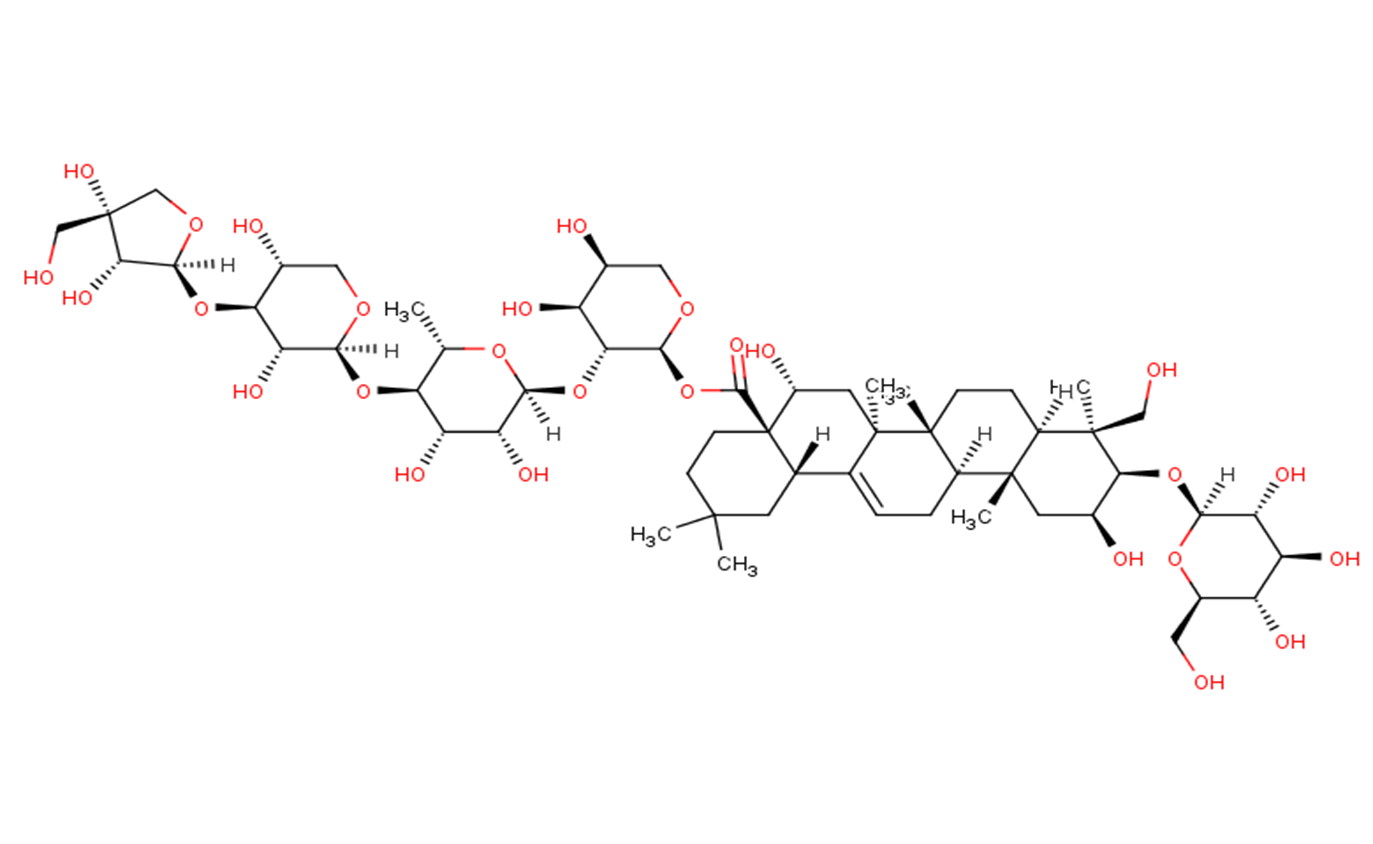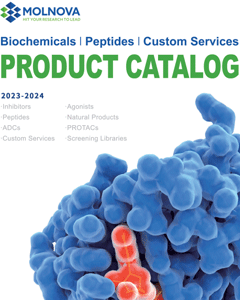
Polygalacin D
CAS No. 66663-91-0
Polygalacin D( —— )
Catalog No. M24678 CAS No. 66663-91-0
Polygalacin D shows anti- proliferation, anti-inflammary, and hepatoprotective activities.
Purity : >98% (HPLC)
 COA
COA
 Datasheet
Datasheet
 HNMR
HNMR
 HPLC
HPLC
 MSDS
MSDS
 Handing Instructions
Handing Instructions
| Size | Price / USD | Stock | Quantity |
| 5MG | 324 | In Stock |


|
| 10MG | 490 | In Stock |


|
| 25MG | 819 | In Stock |


|
| 50MG | 1226 | In Stock |


|
| 100MG | 1839 | In Stock |


|
| 200MG | Get Quote | In Stock |


|
| 500MG | Get Quote | In Stock |


|
| 1G | Get Quote | In Stock |


|
Biological Information
-
Product NamePolygalacin D
-
NoteResearch use only, not for human use.
-
Brief DescriptionPolygalacin D shows anti- proliferation, anti-inflammary, and hepatoprotective activities.
-
DescriptionPolygalacin D shows anti- proliferation, anti-inflammary, and hepatoprotective activities, it can inhibit the expression of lipopolysaccharide (LPS)-induced iNOS and COX-2 protein and mRNA without an appreciable cytotoxic effect on RAW 264.7 macrophages, and can suppress induction by LPS of pro-inflammatory cytokines such as prostaglandin E2 (PGE2).
-
In VitroPolygalacin D (0-40 μM; 48 hours) inhibits cell proliferation with IC50s of26.49 μM in the A549 cells and 20.52 μM in the H460 cells.Polygalacin D (0-20 μM; 48 hours) increases the proportion of early and late apoptotic cells, and nuclear condensation is observed in A549 and H460 cells.Polygalacin D (0-20 μM; 48 hours) may exerts its apoptotic effects by regulating the apoptotic proteins and the IAP family of proteins in A549 and H460 cells. Cell Proliferation Assay Cell Line:A549 and H460 cancer cell lines Concentration:10 μM, 20 μM, 40μM Incubation Time:48 hours Result:Inhibited the proliferation of NSCLC cell lines. Apoptosis Analysis Cell Line:A549 and H460 cancer cell lines Concentration:10 μM, 20 μM Incubation Time:48 hours Result:Induced apoptosis of NSCLC cell lines.Western Blot Analysis Cell Line:A549 and H460 cancer cell lines Concentration:10 μM, 20 μM Incubation Time:48 hours Result:Decreased survivin, c-IAP-1 and c-IAP-2 expression.
-
In Vivo——
-
Synonyms——
-
PathwayApoptosis
-
TargetApoptosis
-
RecptorApoptosis|IAP
-
Research Area——
-
Indication——
Chemical Information
-
CAS Number66663-91-0
-
Formula Weight1209.4
-
Molecular FormulaC57H92O27
-
Purity>98% (HPLC)
-
SolubilityIn Vitro:?DMSO : 100 mg/mL (82.69 mM)
-
SMILESO[C@H]([C@@H]([C@@H](O[C@@]1([H])[C@@H]([C@H]([C@H](O)CO1)O[C@@]2([H])[C@@H]([C@](CO)(O)CO2)O)O)[C@H](C)O3)O)[C@]3([H])O[C@H]([C@H]([C@@H](O)CO4)O)[C@@H]4OC([C@]56[C@](CC(C)(C)CC6)([H])C7=CC[C@@]([C@@]8([C@@]([C@](C)([C@@H](O[C@]9([H])O[C@@H]([C@@H](O)[C@H](O)[C@H]9O)CO)[C@@H](O)C8)CO)([H])CC%10)C)([H])[C@]%10(C)[C@]7(C)C[C@H]5O)=O
-
Chemical Name——
Shipping & Storage Information
-
Storage(-20℃)
-
ShippingWith Ice Pack
-
Stability≥ 2 years
Reference
1.Inhibition of inducible nitric oxide synthase and cyclooxygenase II by Platycodon grandiflorum saponins via suppression of nuclear factor-kappaB activation in RAW 264.7 cells. Life Sci., 2005, 76(20):2315-28.
molnova catalog



related products
-
2-Deoxy-2-fluoro-bet...
2'-Deoxy-2'-fluoro-beta-D-arabinoguanosine is a purine nucleoside analog with a broad spectrum of antitumor activity, targeting malignant tumors of the inert lymphatic system and inducing apoptosis.
-
Cardanol (C15:1)
Cardanol (C15:1), found in cashew nut shell liquid, induces mitochondria-associated apoptosis in human melanoma cells.
-
WM-3835
WM-3835 is a novel and high-specific small molecule?inhibitor of Lysine Acetyltransferase 7 (KAT7, MYST2, HBO1)?, able to potently suppressed OS cell proliferation and migration, and leads to?apoptosis?activation.



 Cart
Cart
 sales@molnova.com
sales@molnova.com


